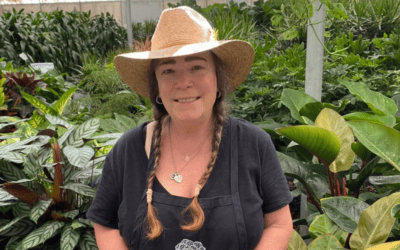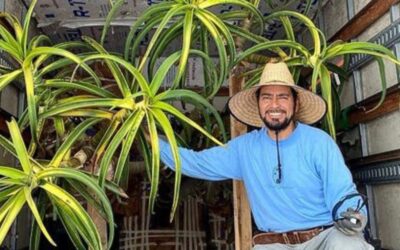Succulents are beautiful to begin with, but when they start producing flowers, it sparks a joy like no other—Marie Kondo could never! Many succulents will flower if they’re in the right conditions, but once they bloom, you might be unsure how to proceed. Do you leave them? Do they need anything to help them along? We created a quick tutorial on caring for different types of succulents when they flower, so you can keep your plants looking fabulous before, during, and after their blooming period.
Nice! My Succulent Has Flowers… Now What?
Here are eight common succulents, what to expect when they flower, and what to do when it happens.
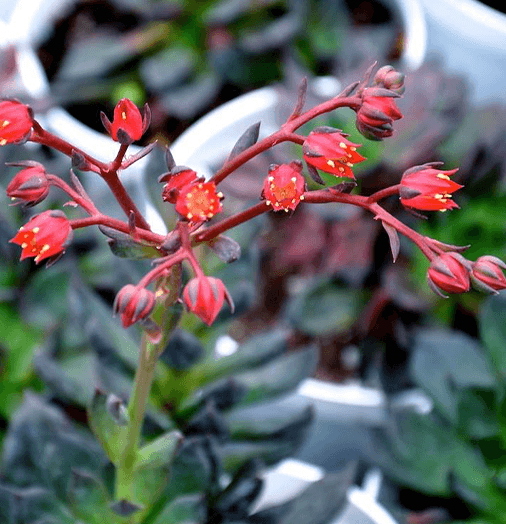
Echeveria
These popular rosette succulents produce vibrant flowers that look like miniature tulips lined up along arching stems. They can last for several weeks and reach impressive heights—particularly the dusty blue succulent Echeveria peacockii, with rosy pink and orange flowers on tall stems.
The flowers typically appear in summer when your plant gets lots of bright sunshine. You’ll need to water a bit more than in winter to keep your plant sufficiently hydrated during its growth spurt. Once the flowers fade, you can cut back the stem at the base with a pair of sanitized shears.
Agave
Mature agave plants will produce a massive inflorescence that looks like a tree. You won’t believe how big they get! Eventually, they get so huge that they topple over and scatter their seeds across the soil. The plant will die afterward, but at least you’ll have plenty of seeds to grow some new agave!
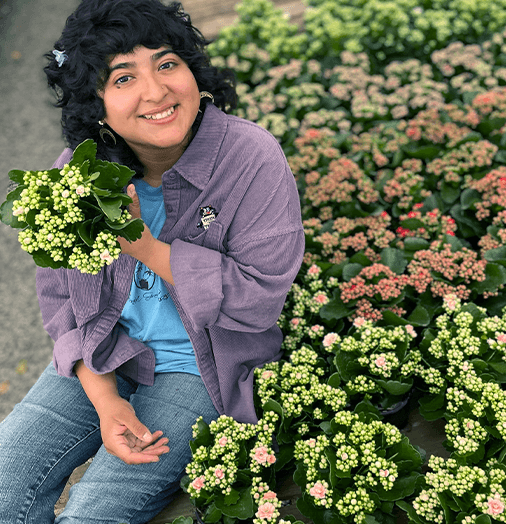
Kalanchoe
Prized for its long-lasting, showy bloom clusters in a bed of pretty scalloped foliage, kalanchoe is super popular as both an indoor and outdoor succulent in California. Its flowers are available in so many bright crayon colors like red, orange, yellow, and hot pink. They tend to bloom in late winter when the days are short and the weather is dry. Cut back the flowers after they fade, and your plant may flower the following year.
Hoya
These trailing succulent plants have glossy leaves that grow on long, cascading vines. Their flowers emerge on “peduncles” from the tip of each vine. Hoyas usually need about five years to grow before they flower, and while they typically flower through spring and summer, exceptionally healthy hoyas may bloom all year. A balanced, slow-release fertilizer applied once in spring and again in summer will help encourage blooms. Trim off spent blooms once they fade to encourage reblooming.
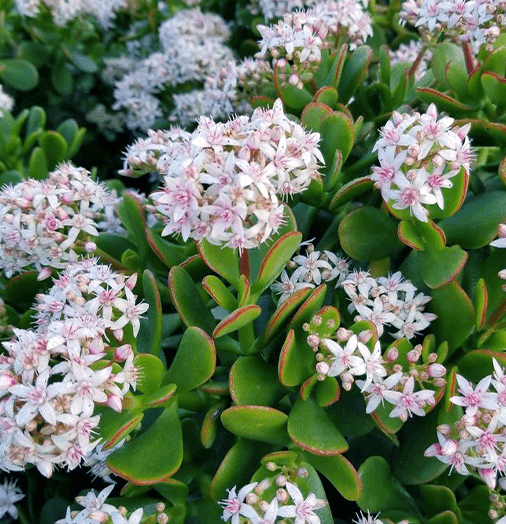
Crassula
Crassulas, like the jade plant, bloom in winter with pretty flower clusters emerging from short stems. They don’t bloom every year, so don’t be disheartened if you have a bloomless winter. They need dry weather, less sunlight, and cooler winter temperatures to encourage blooming. Fertilize in spring and summer, then stop in fall—this is when buds may first start to appear. After the blooms fade, cut them back.
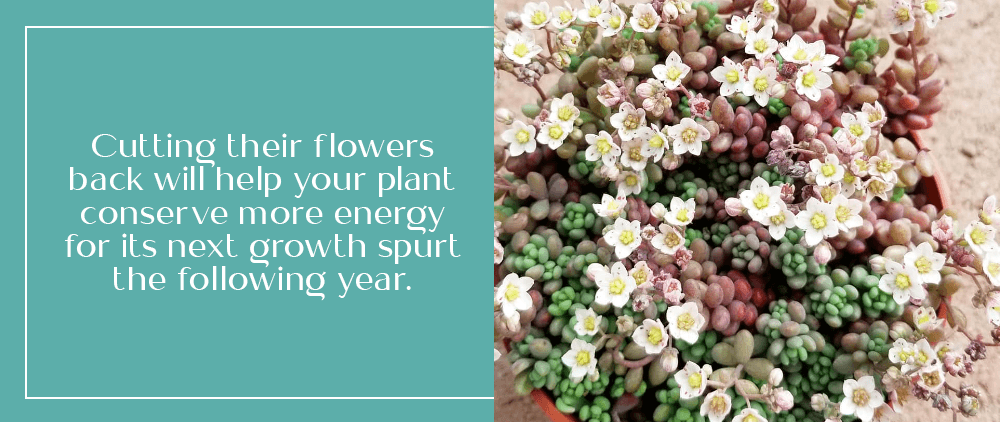
Sedum
There are many different types of sedum—a popular succulent ground cover available in a stunning spectrum of colors. Larger varieties like ‘Autumn Joy’ have voluminous flower clusters that grow tall and upright. Some people like to leave the flowers on after they start to fade, as they still have some ornamental value through the winter. However, cutting them back will help your plant conserve more energy for its next growth spurt the following year.
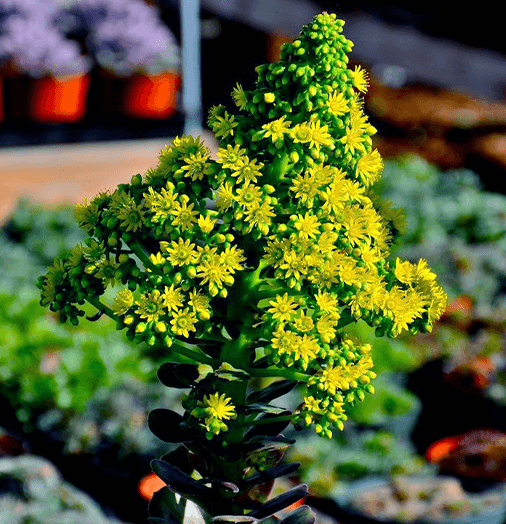
Aeonium
These succulents are also monocarpic, so you can cut back the flowers once they fade. Once the mother plant has died, you can replant its offshoots as a replacement. Their flowers are bizarre and beautiful—they form a bright yellow pyramid-shaped cluster, kind of like a golden Christmas tree! They tend to appear in winter, making for a timely holiday decoration.
Sempervivum
Also known as hens n’ chicks, these fast-spreading rosette succulents are monocarpic, meaning they die after they flower. Don’t be disheartened—you can easily replant the baby offshoots from the plant to grow new plants! You’ll only lose out on the mother plant after it blooms. Blooming starts with age or stress, so you may not see any blooms for several years.
If you have any other succulents that are beginning to flower and aren’t sure how to proceed, feel free to ask the OC Succulents staff for some pointers. So many gorgeous varieties are arriving in-store every week, and some are already in bloom, so visit us soon to see all our incredible succulents for sale in Orange County!

